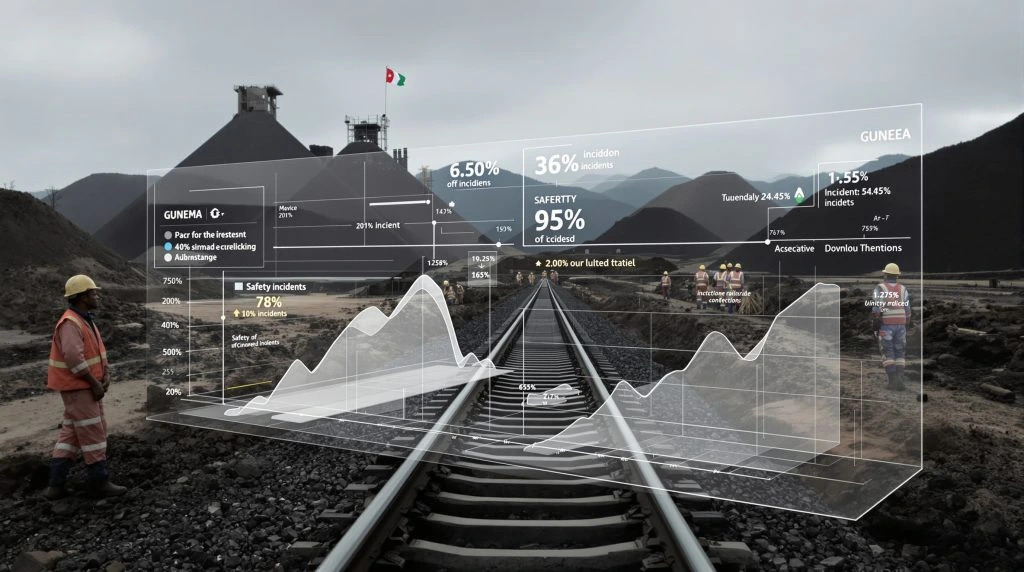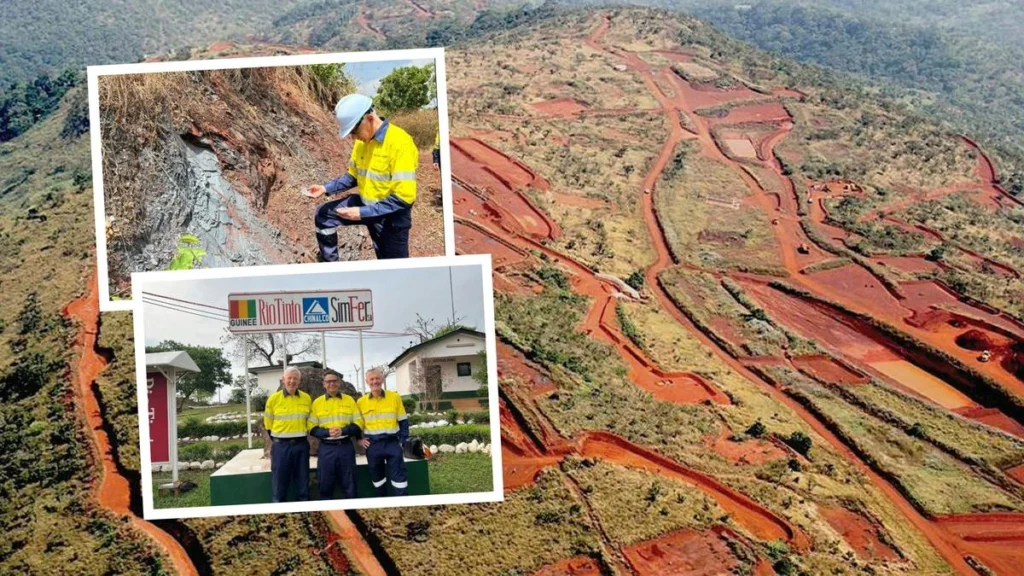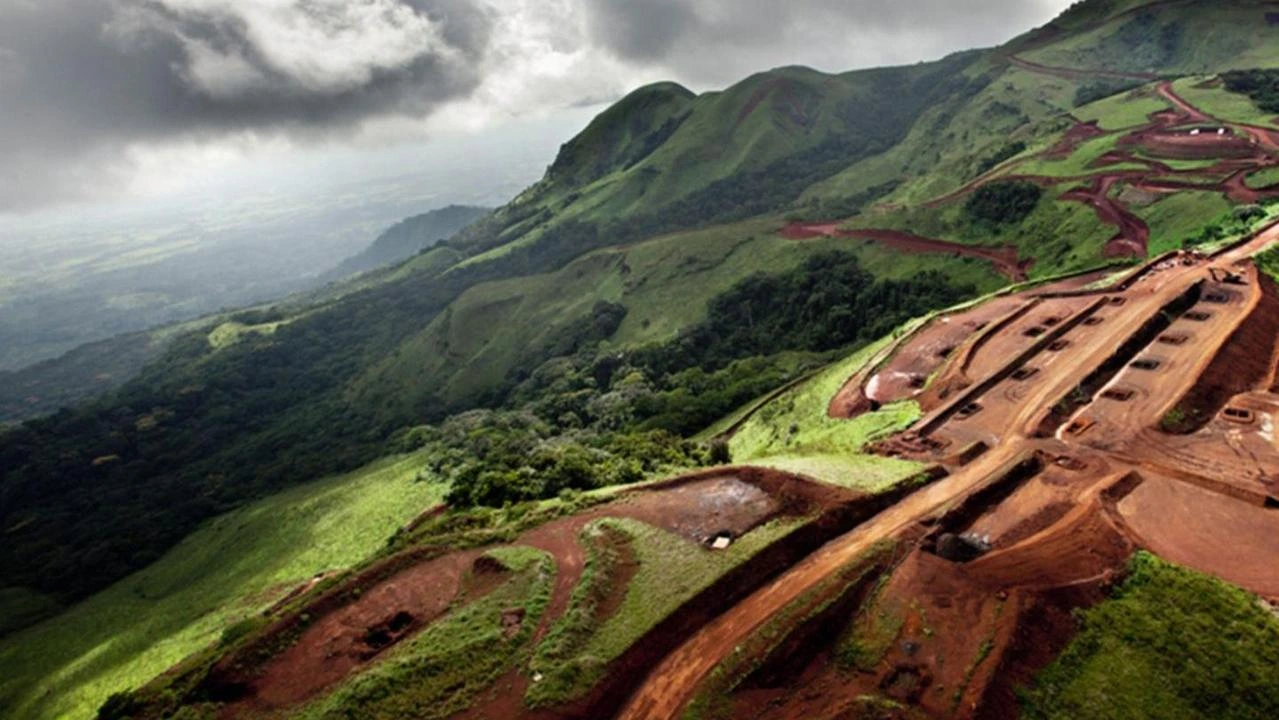The high-grade deposits of Simandou iron ore will change supply chains around the world, but recent deaths and delays show that safety is a big concern. With support from WCS, Rio Tinto, and Chinese partners, the project aims to reach 120Mt per year by 2030. Experts say it won’t take over Western Australia’s top spot, but its high-quality ore will put pressure on producers with high costs. The project also shows how tensions are growing between China, Guinea, and Australia.
Why Simandou Iron Ore is Important
The Simandou iron ore project in Guinea is quickly becoming one of the most closely watched things happening in the global mining industry. Simandou is said to be the world’s largest untapped deposit of high-grade iron ore. It could change supply chains, pricing structures, and even Australia’s dominance in the market. But recent deadly accidents, regulatory pressure, and logistical problems have made people very worried about how long the project will take and what it will mean.
Deaths and Safety Issues at the Simandou Iron Ore Project
Worker safety has become a big worry. There have been 17 deaths since late 2023:
- From November 2023 to March 2025, 13 local workers died while building the railway and port facilities.
- In August 2025, a contract worker died at Rio Tinto’s Simfer site.
- Three foreign workers died at a Winning Consortium Simandou (WCS) site in Kerouane province in October 2025.
Because of these tragedies, WCS had to stop working in October 2025 and do a full safety check. After the August incident, Rio Tinto had already had to shut down.
Before production can start up again, people are now calling for important changes like emergency procedures, first aid readiness, and independent safety audits. The Guinean government has also said that they will fine people who miss deadlines.

Simandou Iron Ore Owners and Stakeholders
Two main consortiums own the structure:
- WCS (Winning Consortium Simandou) controls Blocks 1 and 2 in the north. Chinese companies, including Baosteel, support them a lot. About 75% of output comes from WCS.
- The SimFer Joint Venture, which is made up of Rio Tinto (25%), Chinalco, and the Government of Guinea, owns Blocks 3 and 4 in the south.
This ownership by many countries shows how complicated the situation is politically and how closely Guinea’s military-led government watches over things, requiring monthly progress reports.
FOR MORE DETAILS READ HERE
Goals and Timelines for Exports
SimFer has confirmed that the first export of Simandou iron ore will happen in November 2025. The company plans to ship between 0.5 and 1 million tonnes through WCS port facilities.
- SimFer thinks it will take 30 months to reach 60 million tonnes per year.
- Combined Capacity: By 2030, when both the north and south projects are fully operational, they will be able to deliver 120 million tonnes per year.
- This would be 4.8% of the world’s supply or almost 10% of China’s import demand.
But the November deadline is still at risk because of deadly accidents, heavy rain in 2024, and problems with the infrastructure.
Railways, ports, and capesize carriers are all part of the infrastructure
Simandou’s size calls for infrastructure growth on an unprecedented scale:
- TransGuinéen Railway: A 670-kilometer heavy-haul line with 12 stations, 206 bridges, and 4 tunnels that connects the mines to the port.
- Port at Morebaya: It can handle 120 million tonnes a year and was built by WCS (north) and SimFer (south).
- Shipping Logistics: Exports will need 170 Capesize bulk carriers every year, each carrying about 170,000 tonnes through the Cape of Good Hope.
China has even bought new Capesize ships, which makes it even harder for other countries to compete in the mine-to-mill supply chain.

The High-Grade Advantage of Simandou Iron Ore
One of the main reasons people are paying attention to Simandou is because of its high ore grade:
- The average grade is 65–66% Fe, which is much higher than Pilbara’s 61% Fe.
- This high grade means there are fewer impurities, which is good for steelmakers who want to make steel with cleaner raw materials.
- Analysts say that Simandou’s quality is similar to that of Vale’s Carajás deposits in Brazil, which are the best iron ore in the world right now.
This high quality means that Simandou ore will cost more, even though it puts pressure on producers of lower-quality, higher-cost ore.
Prices, Costs, and Risks in the Market
S&P Global says that Simandou iron ore will change the way the market works:
- Costs: The expected all-in sustaining cost is US$55–60/t once the plant is at full capacity in 2030.
- Prices Expected: The benchmark price for iron ore is expected to be US$87 per tonne by 2032.
- Supply at a High Cost is at Risk: About 270 million tonnes of global production could be too expensive to sell.
Australia’s Pilbara producers are safe, with cash costs as low as US$20/t, but Simandou is still a threat to their dominance in the high-end market.
Simandou Iron Ore vs. Western Australia
In 2023, Western Australia sent almost 950 Mt of iron ore to other countries. This made up 38% of the world’s supply and brought in A$9.4 billion in royalties, which is about 25% of WA’s state revenue.
Simandou, on the other hand, will only deliver 60 to 120 million tonnes a year, which is less than 10% of WA’s output.
- WA Outlook: Tim Treadgold and other experts say that Simandou is not a “Pilbara killer.”
- Risks: Economists say that if iron ore demand slows down, there could be job losses, a drop in the housing market, and higher unemployment.
- Resilience: WA is still expected to change, and Rio Tinto has said again that its Pilbara operations are the company’s main focus.
China, BHP, and Albanese’s Involvement
China is testing its buying power as Simandou rises. In 2025, the China Mineral Resources Group, which owns Chinese state-owned steel mills, temporarily stopped imports of BHP’s Pilbara iron ore from the Jimblebar mine. This put 3.5% of Australia’s total exports at risk.
Anthony Albanese, the Prime Minister of Australia, called for a quick resolution, showing that iron ore is now a battleground for both diplomacy and business.
Safety and ESG lessons for mining
The Simandou iron ore accident has made safety the most important thing for investors and regulators:
- Independent safety checks at all sites.
- Better medical facilities and emergency training.
- Clear reporting of incidents and international standards.
Experts in the field say that safety must be a top priority for mining to be sustainable. The deaths at Simandou show how hard it is to balance tight deadlines with worker safety.
Conclusion – The Future of Simandou Iron Ore
The Simandou iron ore project is a double-edged sword: it will provide more high-quality ore that will help steel decarbonisation, but it has already caused deaths, delays, and geopolitical risks.
It won’t dethrone Australia’s Pilbara, which has a capacity of 120 Mt per year, but it will change the balance of pricing, quality, and global supply dynamics. Simandou is less of a killer for WA and other producers and more of a market disruptor. It makes everyone raise their standards for safety, quality, and efficiency.
Questions and Answers about Simandou Iron Ore
Q1. What is the project for iron ore in Simandou?
It is one of the largest high-grade iron ore deposits in the world that hasn’t been mined yet. It is located in Guinea and was developed by WCS, Rio Tinto, Chinalco, and the Guinean government.
2. When will the first shipments of iron ore from Simandou leave?
The first shipment is expected to arrive in November 2025, and by 2030, the full ramp-up to 120 Mt per year should be complete.
Q3: What makes Simandou iron ore so important?
Its grade of 65% or higher helps the steel industry cut down on carbon emissions, makes supply chains more diverse, and puts pressure on low-cost, low-grade producers.
Q4. Who owns Simandou?
WCS is in charge of Blocks 1 and 2 in the north (75% of output), and SimFer (Rio Tinto, Chinalco, Guinea) is in charge of Blocks 3 and 4 in the south.
Q5. Will Simandou be bad for WA’s iron ore industry?
Not very much. WA makes almost 950 Mt every year, while Simandou makes 120 Mt. However, changes in long-term demand could affect jobs and housing in WA.
FOR DAILY UPDATES VISIT US AT AUSTRALIANMAGAZINE
